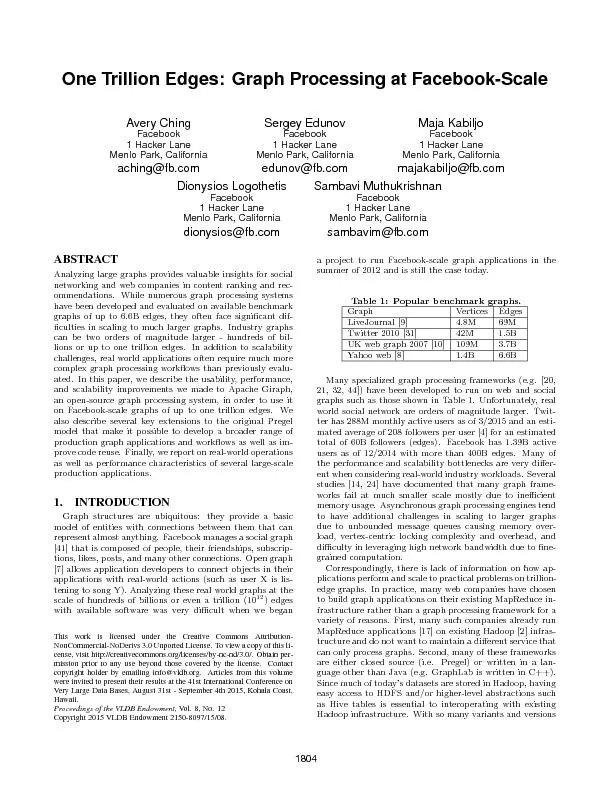PDF-OneTrillionEdges:GraphProcessingatFacebook
Author : briana-ranney | Published Date : 2016-07-13
1805 1807 1811 1814 1808 1813 1804 1810 1812 1809 1815 1806 Graph Vertices Edges LiveJournal9 48M 69M Twitter201031 42M 15B UKwebgraph200710 109M 37B Yahooweb8 14B 66B Manyspecializedgrap
Presentation Embed Code
Download Presentation
Download Presentation The PPT/PDF document "OneTrillionEdges:GraphProcessingatFacebo..." is the property of its rightful owner. Permission is granted to download and print the materials on this website for personal, non-commercial use only, and to display it on your personal computer provided you do not modify the materials and that you retain all copyright notices contained in the materials. By downloading content from our website, you accept the terms of this agreement.
OneTrillionEdges:GraphProcessingatFacebook: Transcript
Download Rules Of Document
"OneTrillionEdges:GraphProcessingatFacebook"The content belongs to its owner. You may download and print it for personal use, without modification, and keep all copyright notices. By downloading, you agree to these terms.
Related Documents

